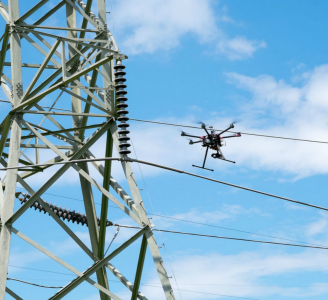Editorial Feature
Shetland Space Centre (SSC) Design Principles Questionnaire
Words By: Drone Major
Shetland Space Centre (SSC) is developing a vertical launch spaceport on the island of Unst, Shetland.
The spaceport will launch small rockets into space from Lamba Ness on Unst in a Northerly direction over the sea. To ensure that the launching rockets are protected from other air users SSC (the change sponsor) are undertaking an Airspace Change with the Civil Aviation Authority (CAA). The change process is described in CAP 1616, which can be found at this link: https://publicapps.caa.co.uk/docs/33/CAP1616E2noninteractive.pdf
One of the key principles of the change process is that it should be as transparent as possible, therefore the CAA hosts an airspace change portal where individual airspace changes can be followed.

The following link will take you to the portal: https://airspacechange.caa.co.uk/OrganizationSearch
Another important principle is that “In contemplating any airspace change proposal, the change sponsor must consider the impacts on others and the implications those impacts may have, and engage with them appropriately.” Therefore, consultation and engagement take place throughout the change process. This questionnaire forms part of this first stage of engagement and is designed to help SSC identify affected parties (Stakeholders). It is also important to note that at this stage SSC do not have a proposed solution, again this engagement is meant to inform SSC as to what is important to the affected parties. The feedback that SSC will get from this engagement will help SSC begin to craft the design principles of the airspace change and will influence the criteria against which any option will be evaluated. The project is also subject to a full planning application that is being run separately to the application for airspace to support the operation. This questionnaire is not linked to the Planning Application.
It is important that the views of stakeholders are considered at an early stage in the process, and therefore, your responses to the attached questions are important to understand what our key areas of consideration should be for a successful airspace change process.
Answering the Questionnaire
1.1 Points for your Consideration This section provides further information that may help when considering a response to the questions posed in Section 2.
1.1.1 Periodicity of Operations Any restrictions on the airspace environment are not expected to be in place permanently. However, there will be restrictions placed in advance of proposed launches, and for a period after to ensure that the airspace has been vacated and that normal flying operations can continue safely. There may be a certain number of restrictions that can be tolerated with minimum impact. The project team would like to understand what frequency of operation would create a lower impact.
1.1.2 Time of Day When responding to the questions, you may also wish to consider whether your comments are applicable by day or by night, or whether you feel that priorities should change over the 24-hr period, or day to day.
1.2 Action Required We have developed the questions below in Section 2 and would encourage you to insert your responses in the enclosed table and return this to us as described in 1.3 below. Please do not feel constrained in your response to any question. If you wish to highlight any other relevant local constraints or issues, then SSC would welcome any feedback you choose to contribute that will support the development of the Design Principles. Your responses may be operational or environmental in nature but are those you feel are most important to you, or to your represented community.
1.3 How to Respond There are several ways you can respond to the survey. The easiest and quickest way to respond is to access the questions via the link below. https://airspace-change.shetlandspacecentre.com/
Alternatively, you can choose to fill your answers directly to each question in the relevant field in Section 2 below. Then save the file that includes your responses and attach to an email to the following address: [email protected]
In addition to this word document, we will accept scanned, hand-written responses or email responses provided they are legible and clearly identify the question to which your response relates.
How to Respond
In addition to this word document, we will accept scanned, hand-written responses or email responses provided they are legible and clearly identify the question to which your response relates.
We will also accept legible postal responses to the following address within the timescales specified in 1.5 below: Airspace Change Shetland Space Centre Ltd,
Moray Park, Grantown on Spey, Moray, PH26 3JF
It is important that individual email responses clearly show your name and contact details; this will allow us to cross refer to the emails we send out.
1.4 Focus Groups SSC intends to hold Focus Groups and meetings with key stakeholders during January 2020. Therefore, we ask for the questionnaire responses to be returned to us by 10 January 2020, ahead of these events. During the Focus Groups discussions, additional views will be recorded and collated. The responses from the Focus Groups and the questionnaires will be analysed and will form the basis of the draft Design Principles document, for review and subsequent submission to the CAA. Please note again that these Focus Groups are for views on the Airspace Change Process and are not linked to separate consultation meetings on the Planning Application.
1.5 Timescale for Responses Please ensure your response is returned to us no later than 10 January 2020.






